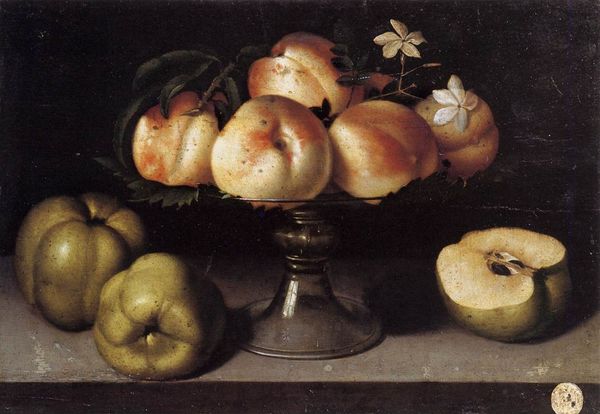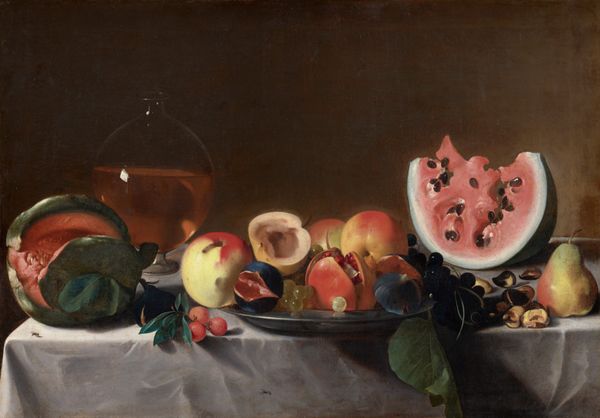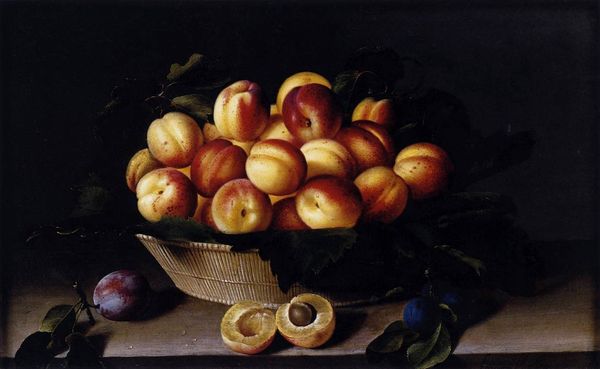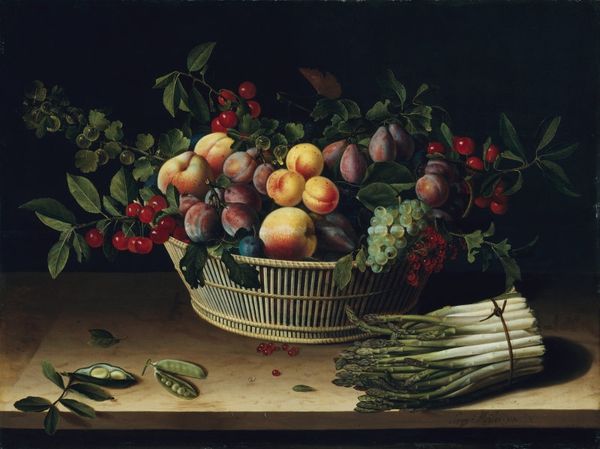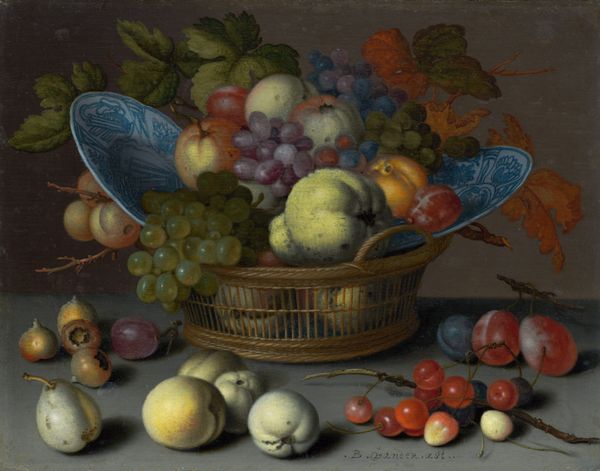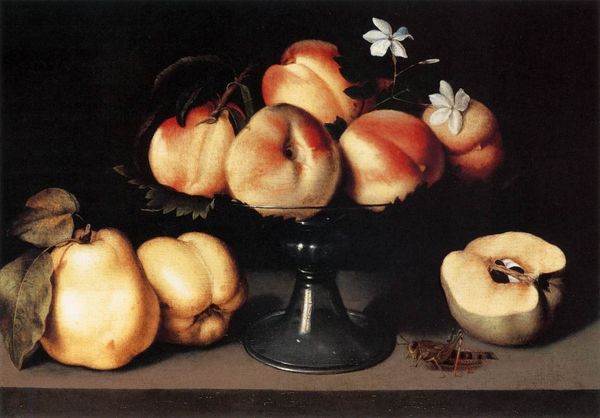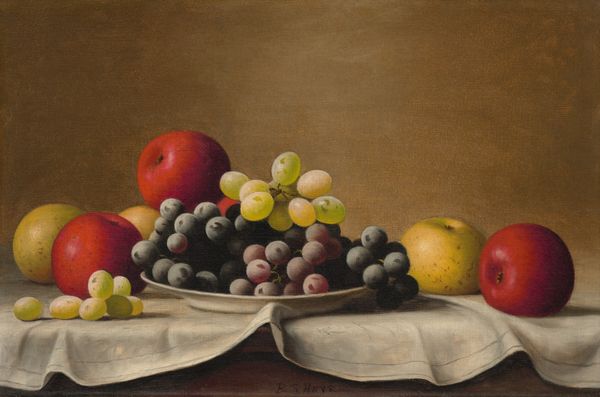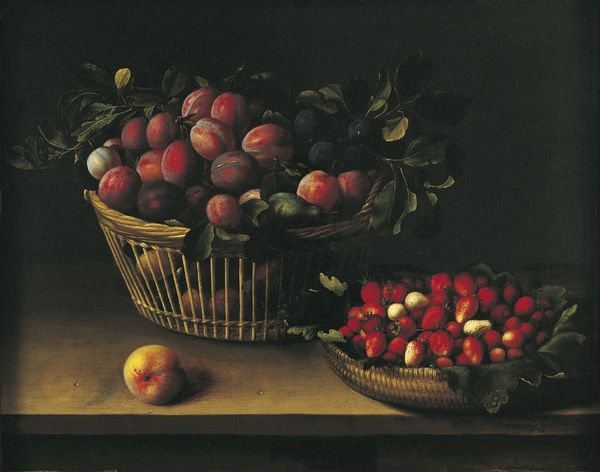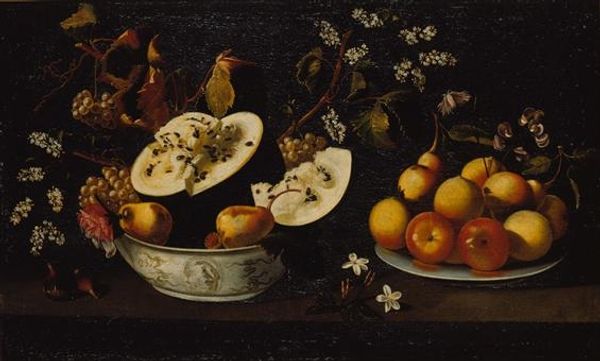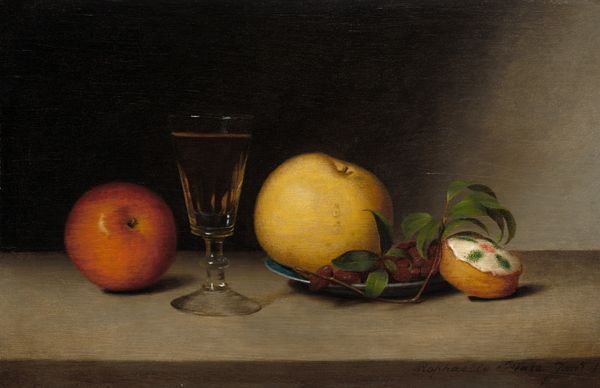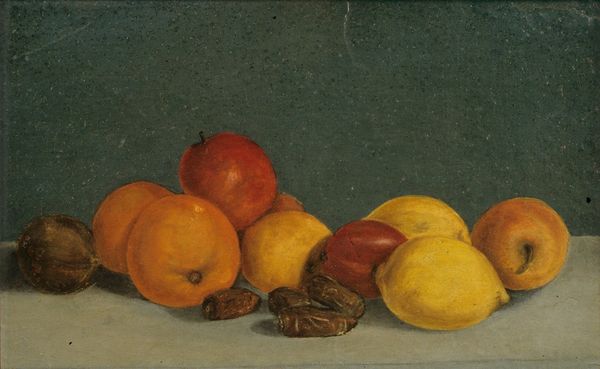
tempera, painting, oil-paint
#
food
#
baroque
#
tempera
#
painting
#
oil-paint
#
oil painting
#
fruit
#
italian-renaissance
Copyright: Public domain
Curator: This is Fede Galizia’s “Still Life,” painted in 1607. Editor: Immediately, it evokes such a poised stillness. A fragile equilibrium between decay and ripeness, illuminated against the inky black backdrop. I find myself drawn to the halved apple – its exposed seeds a potent reminder of mortality. Curator: Galizia was remarkable, wasn’t she? One of the few recognized women artists of her time. She was celebrated for her still lifes, with their incredible attention to detail. The fruit here, the peaches and apples rendered in oil on, most likely, a wooden panel... It’s just astonishing! Editor: Absolutely! And her decision to focus on such humble subjects…It can be viewed through the lens of intersectional feminism. Consider the limited opportunities afforded women artists of the period. Was this celebration of the domestic a form of quiet resistance, or merely a constrained choice? How might it reflect the social expectations placed upon women? Curator: Or perhaps she just found extraordinary beauty in the everyday. Look at the composition. It feels almost mathematically precise, and then the odd, single flower—that subtle break from order thrills me. There's such drama. I see the bloom as the brief joy. What do you think? Editor: It does disrupt the rigidity, but to what end? Considering the era's strictures, such flourishes often masked complex meanings. Perhaps a subtle nod to forbidden knowledge, or even self-expression within an oppressive framework. We have to be very careful romanticizing oppression though; she could have liked peaches too. Curator: Exactly! Her gaze is all we truly know. Regardless, what feels incredibly poignant to me is the contrast. Between the flawless perfection and the cut, browning fruit. It’s a very stark and beautiful way of saying everything is fleeting. Editor: The choice to include a cut specimen in still life paintings served to expose some raw realities of existence often absent from grand historical and biblical painting genres. The rotting can start now, but for Galizia it’s held—at least temporarily—in potent display. Curator: This feels especially relevant today. It leaves me asking, “What parts of ourselves and our realities are we, perhaps wrongly, obscuring in our own art?” Editor: And to remember, those choices—what is displayed and what isn't—reflect our values, the moment we are in. Still life indeed.
Comments
No comments
Be the first to comment and join the conversation on the ultimate creative platform.
